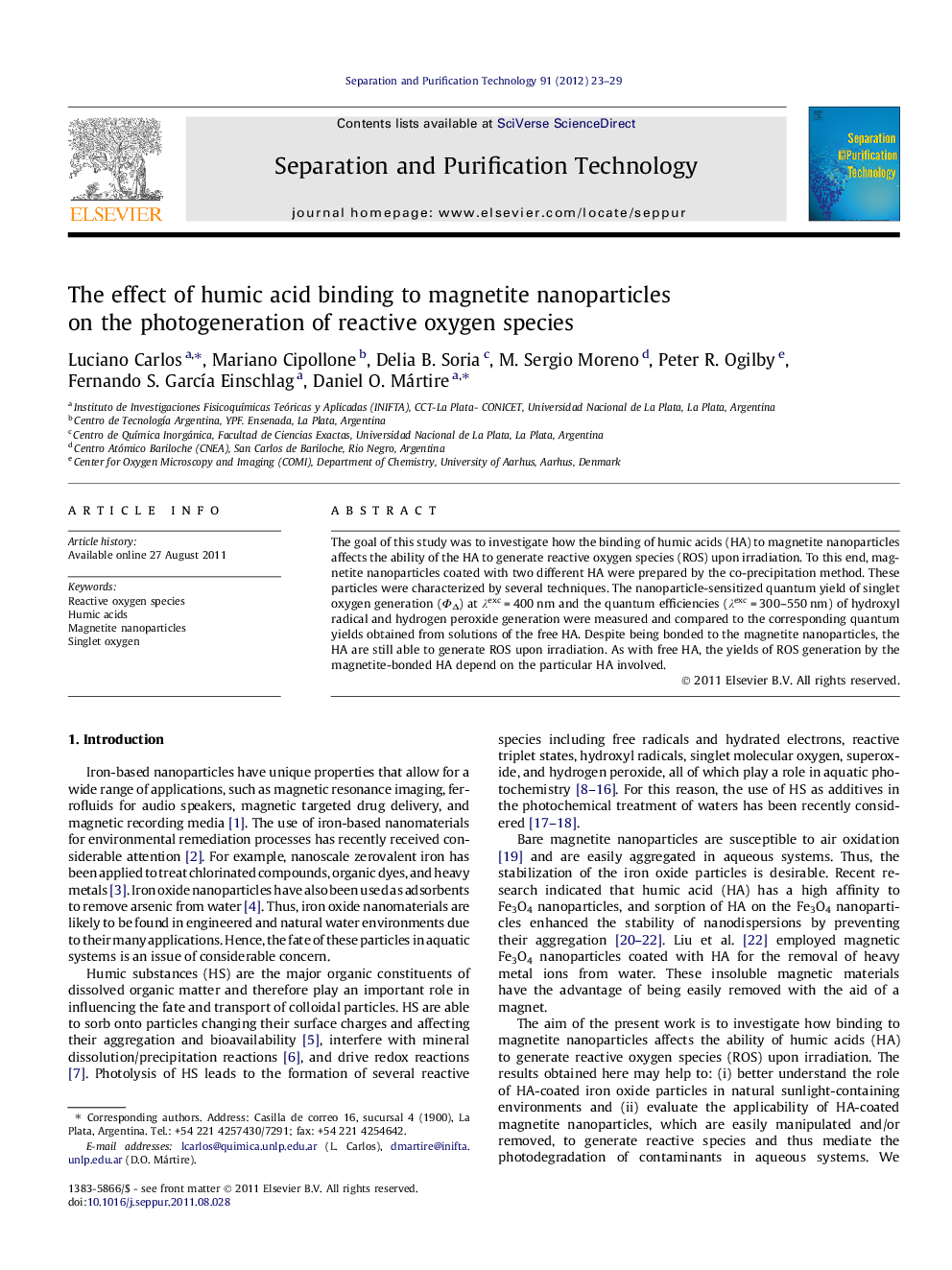| Article ID | Journal | Published Year | Pages | File Type |
|---|---|---|---|---|
| 642206 | Separation and Purification Technology | 2012 | 7 Pages |
The goal of this study was to investigate how the binding of humic acids (HA) to magnetite nanoparticles affects the ability of the HA to generate reactive oxygen species (ROS) upon irradiation. To this end, magnetite nanoparticles coated with two different HA were prepared by the co-precipitation method. These particles were characterized by several techniques. The nanoparticle-sensitized quantum yield of singlet oxygen generation (ΦΔ) at λexc = 400 nm and the quantum efficiencies (λexc = 300–550 nm) of hydroxyl radical and hydrogen peroxide generation were measured and compared to the corresponding quantum yields obtained from solutions of the free HA. Despite being bonded to the magnetite nanoparticles, the HA are still able to generate ROS upon irradiation. As with free HA, the yields of ROS generation by the magnetite-bonded HA depend on the particular HA involved.
Graphical abstractFigure optionsDownload full-size imageDownload as PowerPoint slideHighlights► Humic acid- Fe3O4 nanoparticles as models for natural particles. ► Phosphorescence experiments allowed determination of singlet oxygen yields. ► The quantum efficiencies of HO and H2O2 were determined. ► The yields of reactive oxygen species depend on the nature of the humic acids.
